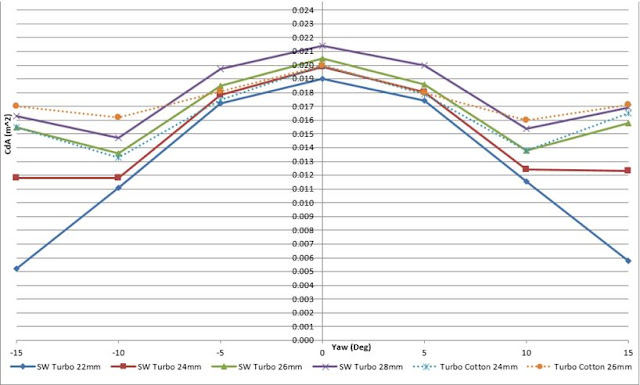jens wrote:
Tom, I realize challenging you on this subject is a little like
you challenging me on the 9th century writings of al-Jahiz. But that's not going to stop me! ;-)
Ha!...that's not going to happen...ever ;-)
jens wrote:
I note first that Josh's write-up begins with precisely the lift-off scenario that is so absurd. The pebbles in chipseal are 1/4 or 3/8 inch, with the protruding edge typically being a fraction of that. So we're talking PSI in the thousands for one of these. Rubber ain't that hard. Do you remember polyurethane skateboard wheels? They're completely solid and higher on the durometer scale than bike tire rubber. Yet even those can ride over pebbles and what not and absorb the roughness.
Aaah...I think you might be misunderstanding that. He starts out with a "rigid" wheel example, but when he begins discussing pneumatic tires, he's not describing any sort of "lift off", but instead that a large portion of that bump encountered is absorbed by the tire and a portion is used to
raise the bike a much smaller amount. The tire never loses contact with the surface and the bike doesn't go airborne. It's just a way of describing how a portion of the energy is absorbed by the tire (and mostly returned to the surface in the trailing half of the contact patch) and a portion gets transmitted
through the tire and into the frame, where it is eventually dissipated as heat in the rider's body. The stiffer you make that air spring, the less energy is absorbed by the tire and the more is transmitted.
Urethane skate wheels also deflect some...that's why they're faster than the clay and steel wheels they replaced. Pneumatic tires just take that same concept to a whole new level.
jens wrote:
In your article you write:
Quote:
In actuality, what I did was hold the CdA "fixed"..... and I then varied the tire pressures.
Now, just a few days ago, you and others asserted that the minuscule lip on open tubular tires made a significant aerodynamic difference. I just just measured a tire at 22.5mm with 100psi, then inflated it to 130 psi and measured it at 23.35mm. So let me ask: are you sure you held CdA "fixed"?
In my testing, the CdA of
just the tires may have changed with differing pressure (and the resulting width growth of the tire), but you need to remember a couple things:
- First, the VE testing was done at basically zero yaw. If you look at the wheel-only testing that Cam Piper did for me with the full range of S-Works Turbo tires on the same wheel (CLX64), you can see that at zero yaw, the CdA differences between tires that are nominally 2mm different than each other only vary in CdA by ~.0005-.001m^2. You measured a difference of ~1mm going from 100-130psi on your tire, so logically one could assume a difference of half that amount (.00025-.0005m^2) for that case. Those values are within the "noise" of the measurement technique (VE), and are also well below the large step in "power required" seen at the higher pressures. For example, in my testing, I saw a difference in power required between 8 and 9 bar of ~20-30X that amount.
 http://bikeblather.blogspot.com/...t-3-after-party.html
http://bikeblather.blogspot.com/...t-3-after-party.html
- Secondly, Josh's testing was performed using the classic "regression" approach, in which separate estimates of CdA and Crr are calculated. He would've "seen" the large jumps in CdA required for that to be the source of the increased power requirement if changing CdA was the case.
Based on that, I find it highly doubtful that changes in tire width and the effects on wheel CdA are what is being observed with the "breakpoint" results.
To be fair, I haven't seen the data that Chris and Jon at Flo are referring to for such dramatic difference in wheel/tire CdA with pressure changes...and I wonder if they are referring to the values at zero yaw, or at larger yaw angles?
http://bikeblather.blogspot.com/